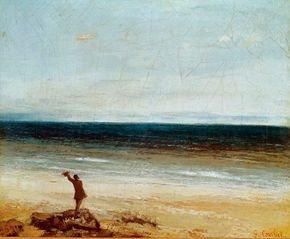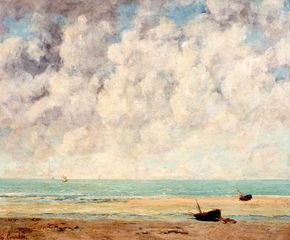French impressionist Gustave Courbet (1828-1885) applied the idea of direct observation to his subject selection.
Working in a dark palette and a rough style that opposed the standard convention of Salon finish, Courbet rejected the established artist's repertoire drawn from history and mythology. He preferred subjects that recorded his own experience: the working people of his native village Ornans and scenes of his life as an artist.
Advertisement
Courbet became an outspoken advocate of "realism," a modern approach that was frank in style and unsentimental in expression. The links below will take you to paintings of wonderful seascapes by Gustave Courbet found in this article.
- The Edge of the Sea at Palavas: The Edge of the Sea at Palavas is a great example of Gustave Courbet's usage of the dark palette to portray life honestly. Learn about the realistic The Edge of the Sea at Palavas.
- The Calm Sea: Painting en plein air at the Trouville shore, Gustave Courbet beautifully captured the movement of the clouds over the still sea. Learn about The Calm Sea.
Go to the next page to see a beautiful image of Courbet's painting The Edge of the Sea at Palavas. For more on Impressionist paintings, artists, and art history, see:
Advertisement

